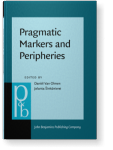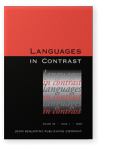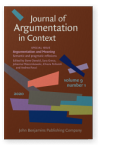Doriana Cimmino
List of John Benjamins publications for which Doriana Cimmino plays a role.
2023 Chapter 12. On the topic-marking function of left dislocations and preposings: Variation across spoken and written Italian and English Discourse Phenomena in Typological Perspective, Barotto, Alessandra and Simone Mattiola (eds.), pp. 337–368 | Chapter
This chapter is devoted to the functional variation of Left Marked Structures (LMSs) – namely, Left Dislocations (LDs) and Preposings (PRs) –, which are generally described as topic-marking discourse strategies. Results from a corpus-based and multi-level investigation demonstrate that in spoken… read more
2021 Chapter 6. Interactions between distribution and functional uses in Italian adversative pragmatic markers: A corpus-based and multilevel approach Pragmatic Markers and Peripheries, Van Olmen, Daniël and Jolanta Šinkūnienė (eds.), pp. 171–198 | Chapter
This chapter describes the interaction between distribution and functional uses of the Italian Adversative Pragmatic Markers (APMs) ma and però in spontaneous spoken language. These forms are claimed to be distributionally and functionally asymmetrical, as ma preferentially occurs in the left… read more
2020 Domain adverbials in the news: A corpus-based contrastive study of English, German, French, Italian and Spanish Languages in Contrast 20:1, pp. 31–57 | Article
This article examines the functional category of domain adverbials (DAs), which arose fairly recently in the European languages and is claimed to occur frequently in the written press. In order to better understand this category, we investigate the form, use and meaning of DAs in English, German,… read more
2020 Implicit argumentation and persuasion: A measuring model Argumentation and Meaning: Semantic and pragmatic reflexions, Oswald, Steve, Sara Greco, Johanna Miecznikowski, Chiara Pollaroli and Andrea Rocci (eds.), pp. 95–123 | Article
The paper provides evidence that linguistic strategies based on the implicit encoding of information are effective means of deceptive argumentation and manipulation, as they can ease the acceptance of doubtful arguments by distracting addressees’ attention and by encouraging shallow processing of… read more



